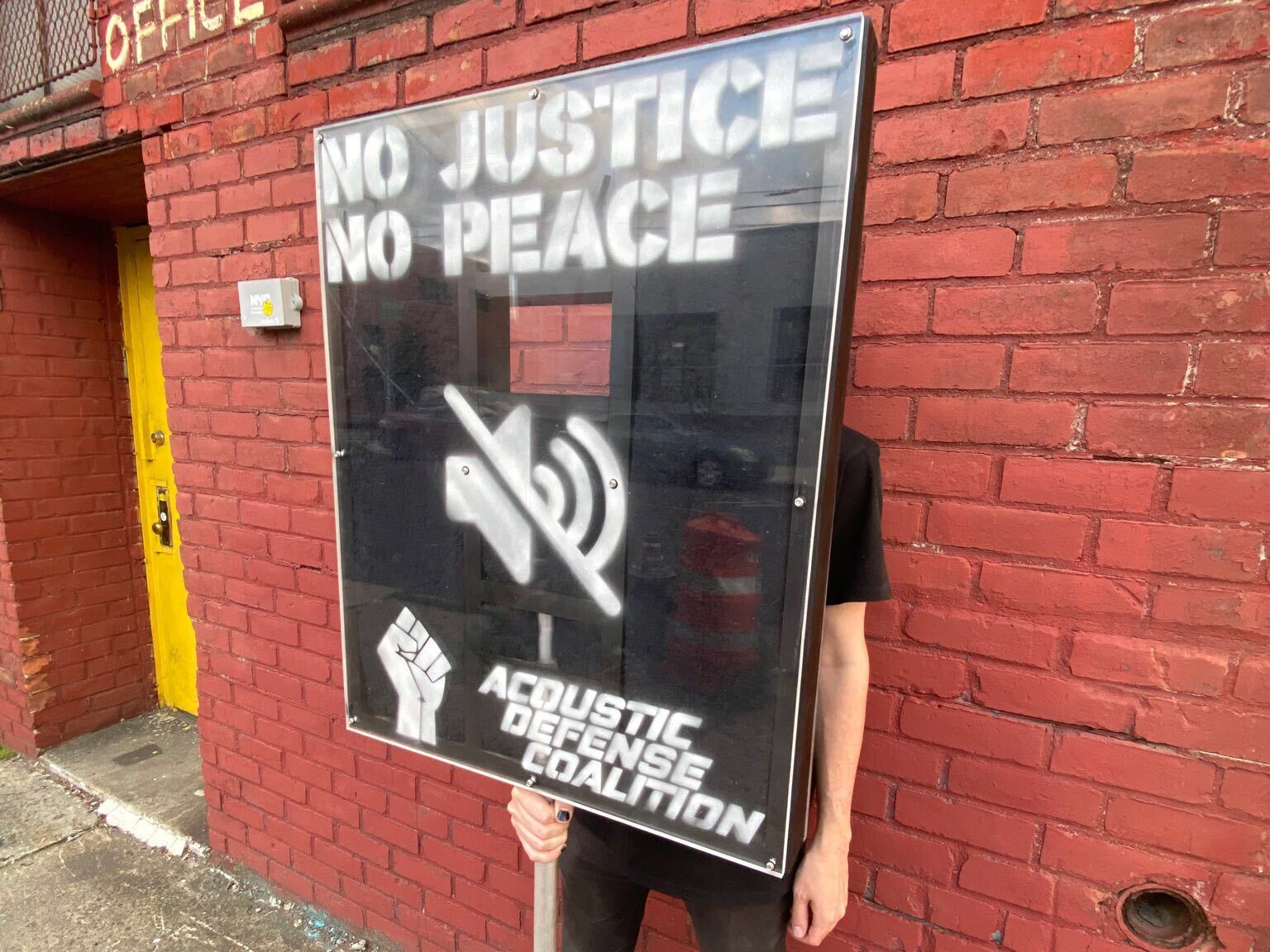Over the past two weeks, cops have been deploying every tool at their disposal to suppress worldwide protests and riots over the deaths of George Floyd, Breonna Taylor, Tony McDade, and other Black citizens killed by police.
Since the protests began, demonstrators in multiple cities have reported spotting LRADs, or Long-Range Acoustic Devices, sonic weapons that blast sound waves at crowds over large distances and can cause permanent hearing loss. In response, two audio engineers from New York City have designed and built a shield which they say can block and even partially reflect these harmful sonic blasts back at the police.
The shield’s designers, Dave Rife and Gabe Liberti, were inspired to build the device after marching in the protests in New York City and hearing about LRAD sightings at demonstrations across the U.S.
“It’s definitely been on our mind a lot how we’ve been seeing police instigating violence, and we’ve heard rumblings here and there about LRADs being spotted in NYC,” said Rife, the shield’s co-designer, who has previously worked in the architecture industry as an expert in acoustics. “We met on Sunday with the aim of building something that resembles a protest sign but can block a fair amount of sound energy. The idea is there could be a few of these in a car, driven to the location where someone has seen an LRAD, and then carried by hand from there.”

LRADs have been a part of anti-protest tactics since the mid 2000’s, when they were adopted by police after being used as a crowd control tool by U.S. military forces in Iraq and Afghanistan. The device essentially works like a high-powered sonic cannon, using an array of small sound drivers to shoot concentrated sound waves that reach above the human pain threshold with a volume of up to 120 decibels.
“LRADs try to pack as much sonic energy into a tight beam as possible, so you have something like a sonic flashlight that can be aimed,” Rife told Motherboard. “Normal speakers produce sound that’s not as tight in directivity. The sound energy may go to places where there aren’t necessarily listeners.”
That means an LRAD can get as loud as a jet engine, but won’t affect the operators or anyone standing behind it, Liberti added.
Rife and Liberti designed their shield to reflect audible sound waves that are condensed and carried via ultrasonic frequencies, and have tested it against a smaller and less powerful version of the LRAD that they built in their studio. It’s made from a pine batten structure filled with recycled denim insulation, and covered by a half inch of clear acrylic on both sides, enabling the user to see ahead through a small window.
According to a detailed teardown of the LRAD 300X posted by another audio technician, the LRADs produced by Genasys, the company that pioneered the devices, do not use an ultrasonic beam to project sound. However, Rife and Liberti say their design would still be effective against these hyper-directional blasts.
Genasys did not immediately respond to Motherboard’s request for comment.
LRADs are pitched to law enforcement as “non-lethal” tools for crowd control, and the police departments have claimed that they should not be considered weapons. But much like tear gas, pepper spray, and rubber bullets, LRADs can cause permanent physical harm. In 2017, a New York City judge ruled in favor of plaintiffs who had sued the NYPD for its use of the device against Black Lives Matter protesters in 2014.
There are also various factors that determine the effectiveness of such a shield. For example, some LRAD models are mounted on top of an SUV or other large vehicle and pointed slightly down at the crowd, which dramatically affects the angle of the blast and the shield’s ability to block and reflect it. The shield is also 50 lbs, so it’s not exactly easy to transport through a crowd.
While the pair haven’t yet tested the shield against an actual LRAD, they are encouraging protesters who see one on the streets to contact them, and are offering to share their design with activists interested in making their own. And of course, they emphasize that the best way to avoid hearing damage when facing down one of the devices is to leave the area.
from VICE https://ift.tt/3cMxtrg
via cheap web hosting
No comments:
Post a Comment